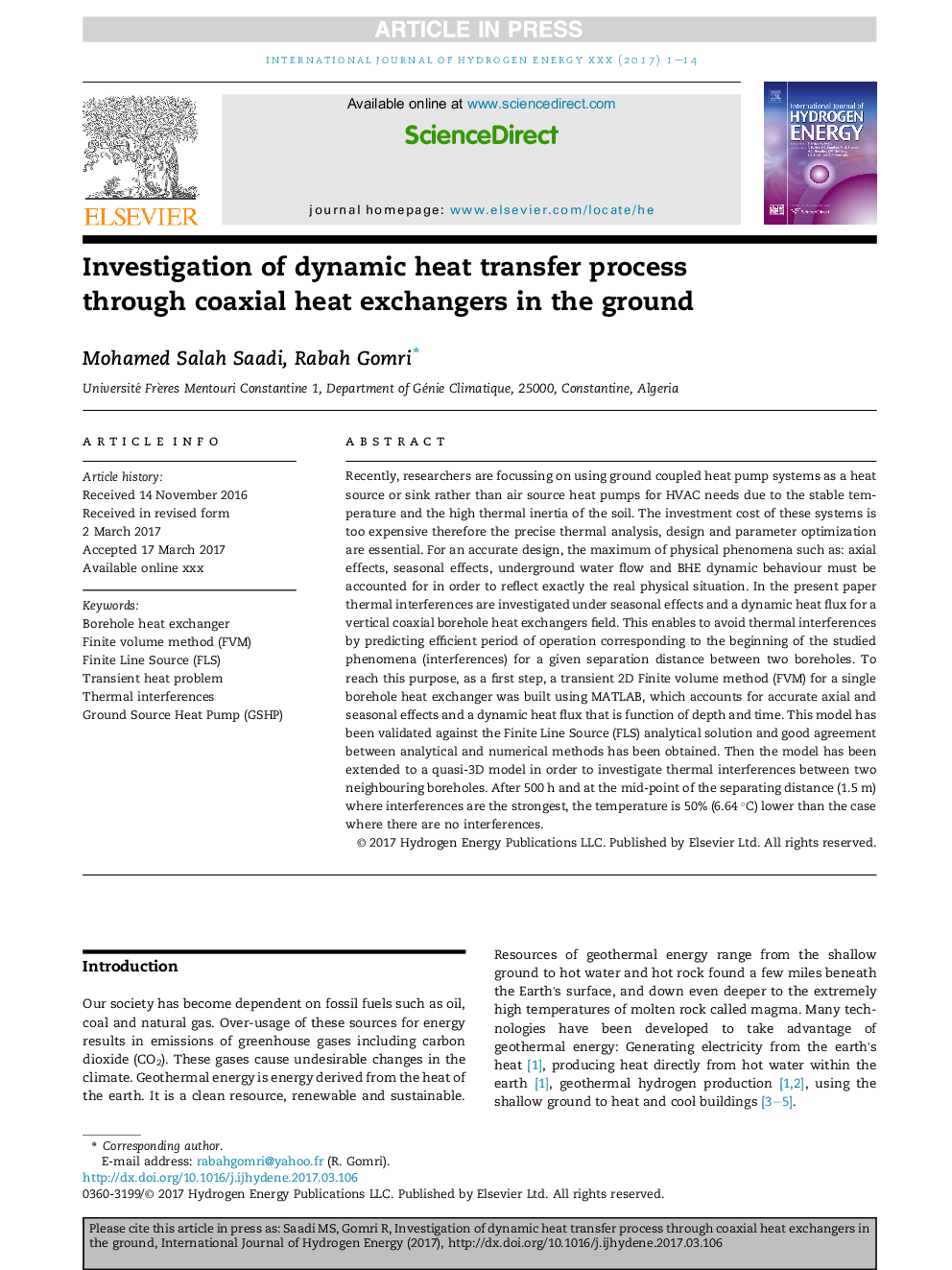| کد مقاله | کد نشریه | سال انتشار | مقاله انگلیسی | نسخه تمام متن |
|---|---|---|---|---|
| 5145440 | 1497349 | 2017 | 14 صفحه PDF | دانلود رایگان |
عنوان انگلیسی مقاله ISI
Investigation of dynamic heat transfer process through coaxial heat exchangers in the ground
دانلود مقاله + سفارش ترجمه
دانلود مقاله ISI انگلیسی
رایگان برای ایرانیان
کلمات کلیدی
موضوعات مرتبط
مهندسی و علوم پایه
شیمی
الکتروشیمی
پیش نمایش صفحه اول مقاله

چکیده انگلیسی
Recently, researchers are focussing on using ground coupled heat pump systems as a heat source or sink rather than air source heat pumps for HVAC needs due to the stable temperature and the high thermal inertia of the soil. The investment cost of these systems is too expensive therefore the precise thermal analysis, design and parameter optimization are essential. For an accurate design, the maximum of physical phenomena such as: axial effects, seasonal effects, underground water flow and BHE dynamic behaviour must be accounted for in order to reflect exactly the real physical situation. In the present paper thermal interferences are investigated under seasonal effects and a dynamic heat flux for a vertical coaxial borehole heat exchangers field. This enables to avoid thermal interferences by predicting efficient period of operation corresponding to the beginning of the studied phenomena (interferences) for a given separation distance between two boreholes. To reach this purpose, as a first step, a transient 2D Finite volume method (FVM) for a single borehole heat exchanger was built using MATLAB, which accounts for accurate axial and seasonal effects and a dynamic heat flux that is function of depth and time. This model has been validated against the Finite Line Source (FLS) analytical solution and good agreement between analytical and numerical methods has been obtained. Then the model has been extended to a quasi-3D model in order to investigate thermal interferences between two neighbouring boreholes. After 500 h and at the mid-point of the separating distance (1.5 m) where interferences are the strongest, the temperature is 50% (6.64 °C) lower than the case where there are no interferences.
ناشر
Database: Elsevier - ScienceDirect (ساینس دایرکت)
Journal: International Journal of Hydrogen Energy - Volume 42, Issue 28, 13 July 2017, Pages 18014-18027
Journal: International Journal of Hydrogen Energy - Volume 42, Issue 28, 13 July 2017, Pages 18014-18027
نویسندگان
Mohamed Salah Saadi, Rabah Gomri,